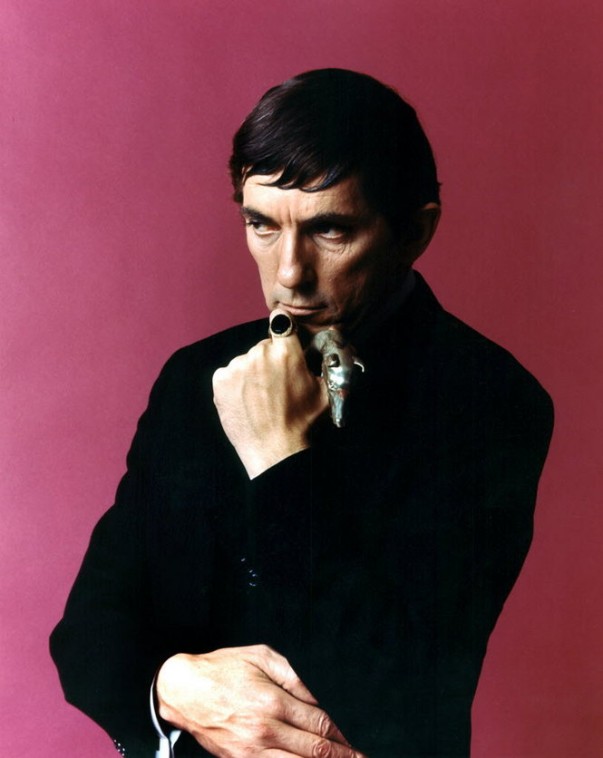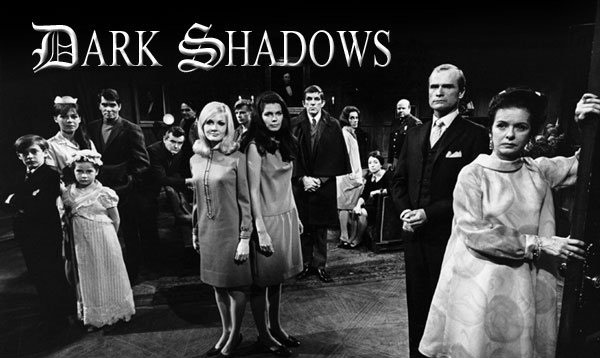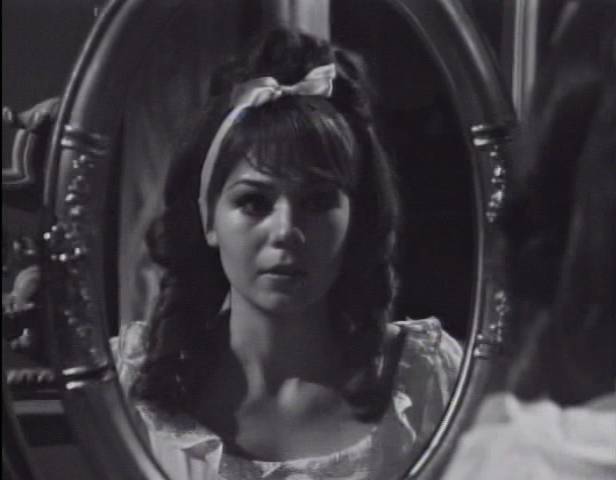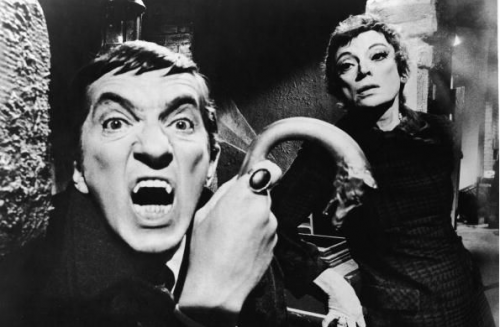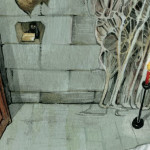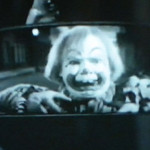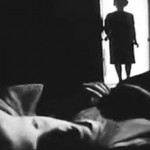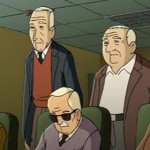“DARK SHADOWS”: A Horror Education in the 70s
A HORROR EDUCATION IN THE 70s: BARNABAS COLLINS, “FEMINIZED” SPACES AND GOTHIC EXCESS
Mario DeGiglio-Bellemare
————————–
Barnabas Collins (Jonathan Frid), one of the most iconic vampires in the history of the horror genre, embodied many aspects of the 18th century Gothic for a whole generation of horror fans in North America. I’m a little younger than that generation, but the impact of the Collinwood night dweller on introducing me to the Gothic tradition is no less important. Barnabas Collins, like no other figure in the genre, at least in the USA and Canada, revealed to daytime audiences the pleasures of Gothic excess. Many boys (like myself) watched what was usually reserved for women: the “feminized” space of the Gothic tradition and the domesticated soap opera. In the tradition of Charlotte Brontë’s Jane Eyre (1847), the show began in its early years with this simple refrain from its governess: “My name is Victoria Winters…” This refrain, anchored by Robert Cobert’s deliciously other-worldly musical score, plunged the viewer into the subjectivity of a deeply women-centred Gothic world.
Edgar Allen Poe Americanized (and masculinized) the British Gothic in the 19th century by internalizing its labyrinthine castle passageways into individual subjectivity, evoking mental states like madness, revealing the beast within, promoting the psychological rather than the supernatural. Think of Poe’s use of the first person narrative in “The Black Cat” (1843), or the extreme metal anxiety of Roderick in “The Fall of the House of Usher” (1839). These texts show an acute preoccupation with the chaotic mental states of the individual. In the 20th century, Dan Curtis’ Dark Shadows brought back the Gothic of the 18th century, with its supernatural elements, malevolent aristocrats, orphaned daughters, family dishonour, old castles, craggy rocks, stormy weather, hidden passageways, persecuted romance, wanderers and uncanny doubles, and above all, an excess of tragic romance that only a soap opera could deliver.
My love story with the horror genre began Friday, February 8, 1974, with the CBS television première of Dan Curtis’ Dracula, starring Jack Palance in the titular role. This film introduced me to the pleasures of being scared. I was so scared in fact, that after the film, I furtively checked my mother’s teeth before going to bed, to make sure she had not succumbed to the vampiric curse. However, it was when I saw Dan Curtis’ Dark Shadows (ABC-TV: 1966-1971), in syndication a few years later, that I began to be attracted by the complex ambiguity of the vampire. If Curtis’ Dracula introduced me to the affective pleasures of horror, his Barnabas Collins introduced me to pleasures of tragic excess. What I didn’t know at the time was that Jack Palance’s Dracula was really Barnabas Collins, replaying the trope of the tragic vampire, even using the a music box to conjure up his tragic past. In 1974, Dracula was really Barnabas, and Mina was Josette. Ironically, because I saw Curtis’s Dracula first, I was uncannily experiencing the impact of Barnabas Collins on North American popular culture through the figure of Dracula.
I trace my love of horror, not to the cinema, but to (horror of horrors!) television. While many studies of the horror genre tend to take for granted that cinema is the genre’s “authentic” home, I want to reclaim the place of television in shaping my horror pleasures. Unfortunately, the horror community is often invested in masculinist perspectives (held by both men and women) that position the cinema as the cutting edge space of “transgressive” horror art. Television, by comparison is often “feminized,” called “soft” in fact, an unsacralized space for the distracted viewing masses. This very gendered posturing is all too common in the horror community, where online forums show fans to be deeply invested in discourses that discuss “real” horror as “aggressively hard-hitting” cinema for the enlightened few who can take it!
It’s no accident that I write about the Gothic genre in relation to television. It too has been, at least in its literary incarnation, associated with women, and the domestic sphere. Ann Radcliffe and Mary Shelley are among the names most associated with the Gothic tradition. It’s also important to remember, that the Gothic story was perceived as “trashy” in its own context, a little like romance novels of today. In the 18th century, Gothic writing was often perceived as a threat to dominant values by promoting vice, immorality, and social transgression through the themes of barbarity, superstition, and irrational fears. The notion that a woman would actually enjoy a tale of terror at this period was in itself transgressive. Often set in gloomy castles and other domestic locales, women enjoyed Gothic tales because they offered glimpses of possibilities outside of patriarchal notions of domesticity.
A horror soap opera, like Dark Shadows, is the ultimate in “feminized” horror! Approximately half of the episodes were directed by Lela Swift, who was one of the first women to take on that role in the soap opera milieu. Also, the character of the scientist, usually associated with a man (think van Helsing here), was given to Grayson Hall, who played Dr. Julia Hoffman with much emotional panache. As with all good soap opera, Dark Shadows had very distinctive female characters: the grand matriarch, Elizabeth Collins Stoddard, (Joan Bennett – Scarlet Street, 1945; Suspiria, 1977); the charismatically evil witch, Angelique (Lara Parker), the dislocated daughter, Carolyn Stoddard (Nancy Barrett), the working-class waitress, Maggie Evans (Kathryn Leigh Scott) and the orphaned governess, Victoria Winters (Alexandra Moltke).
An often discussed aspect about Dark Shadows, repeated ad nauseum in online forums, is talk about the show’s technical ineptitude. The show was taped live, because editing was much too expensive at that time. That means that the viewer is often faced with improvisation, flubbed lines, mic shadows, shaky sets, rudimentary special effects, etc. This constant appeal at how the show is technically “primitive” is yet another case of the denigration and “feminization” of TV horror. It is not a coincidence that this very women-centered horror soap opera gets slammed for being technically inept. For me, the so-called “primitive” aspects of the show are part of the show’s overall charm, not simply because it’s campy, but because it fuels the overall framework of excess. But of course, camp is excess!
I watched Dark Shadows in syndication with my grandmother and aunt when I spent several summers in New Hampshire in the mid to late-1970s. I cannot but highlight here the place of women in my early horror education: my mother, who allowed me to stay up late to watch Hammer films on television (before the advent of VHS), my New Hampshire aunt, who endorsed my watching the Creature Double Feature on Saturday afternoons on WLVI (channel 56 from Boston), and my grandmother, who bought my first “active figure” (a doll really!) of Lon Chaney Jr’s The Wolf Man when I was a pre-teen (fabricated by AHI World Famous Super Monsters).
What Barnabas Collins so powerfully revealed (for that is the vocation of the monster – to reveal) in the late-1960s and early-1970s, a time of unprecedented change in the world, was a character tragically trapped in the past, like a beetle stuck in amber, or a butterfly pinned under glass. In a time when social movements, especially the student movements, clamoured for newness and change, Barnabas represented a space almost hermetically sealed off from the present. The Gothic tradition has often been associated with the past, the irrational, the pre-modern, and the anti-revolutionary. Audiences watched Barnabas everyday, both men and women, but especially the young, because they saw in him a Gothic hero-villain who transgressed temporal boundaries only to be with the woman he so loved, Josette Collins (Kathryn Leigh Scott).
If Night of the Living Dead (George A. Romero, 1968) was uncannily familiar in its almost documentary-like appropriation of the present context, Dark Shadows embodied the complete opposite, the present was seen only in glimpses: a mini dress worn by Carolyn, or Victoria’s fashionable purse as she walks out to go shopping in Bangor (Maine), or the sound of a car outside of Collinwood mansion, or a pint of beer at the Collinsport pub, the Blue Whale, etc. All fetishistic glimpses of the familiar, in an unfamiliar Gothic setting. Untouched by the present, Barnabas was radically uncanny in the turbulent years at the end of the 1960s. A 200-year-old vampire on daytime television? This was a space usually occupied by romantic heroes, but not tragic vampires. Barnabas was both.
In Dark Shadows, the past is in excess of the present, a space of transgression challenging orthodoxies of the new, but also calling out for change. Barnabas Collins was the tragic gatekeeper of this space, a space that was excessively feminine, and ambiguously uncanny. Watching Dark Shadows was like going to a costume party at the Old House, where Barnabas lived, uncannily propelled into the role of characters from 1795. Here, we experience ourselves as unfamiliar. This was the unfamiliar familiar of Dark Shadows, a space of Gothic excess cherished by men and women alike!
For many years, I was obsessed with seeing House of Dark Shadows, which was directed by Dan Curtis, and released in theatres in 1970. This film telegraphs into 97 minutes approximately 140 episodes from 1967: from episode 210 (the arrival of Barnabas) to 350 (his aging under Julia Hoffman and beyond). It finally aired on late night television in the late-1970s. By that time, John Carpenter’s Halloween (1978) had been released, and I became interested in another kind of uncanny, the one about a faceless killer on Halloween night. On the night “he” came home, the present had returned in a powerful way. And while I didn’t know it at the time, I found myself plunged in another kind of women-centered horror: the world of the “final girl.”
Sadly, the Canadian-born actor Jonathan Frid died on April 14. He was 87 years old. Barnabas Collins, however, will continue to be unleashed from his coffin, quite literally in fact, as MPI Video has released Dark Shadows: The Complete Original Series (Deluxe Edition), in the shape of a coffin with the image of Barnabas “at rest” superimposed over the spines of the individual DVD boxes. This DVD release ties in with the Tim Burton Johnny Depp remake due to be released on May 11th. The set includes all 1,225 episodes. A rather apropos fetish object in my opinion, for a vampire who haunted the deeply fetishistic consumer culture of soaps and detergents.

 May 1, 2012
May 1, 2012  No Comments
No Comments
